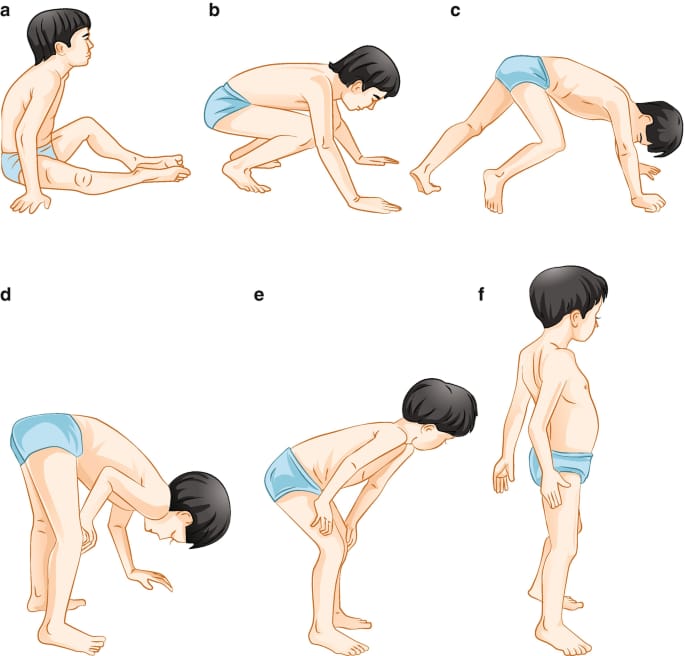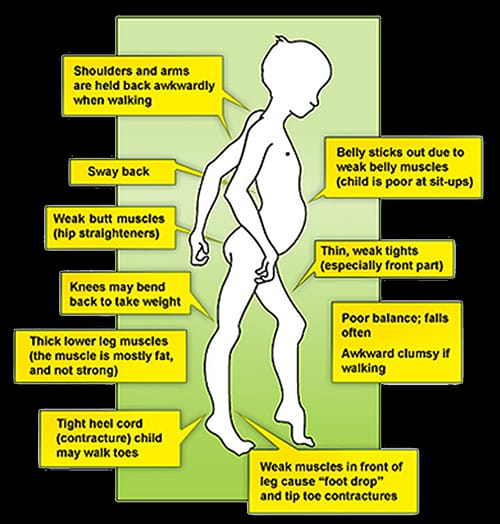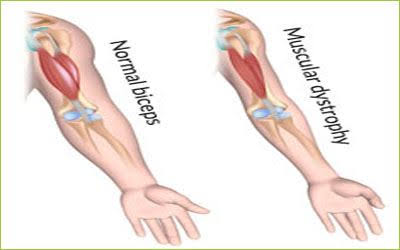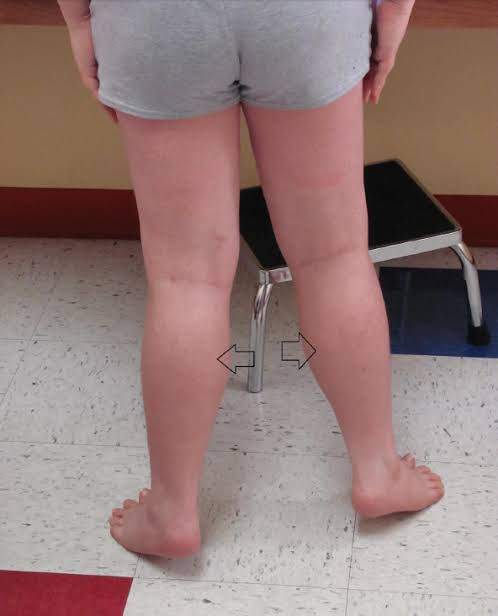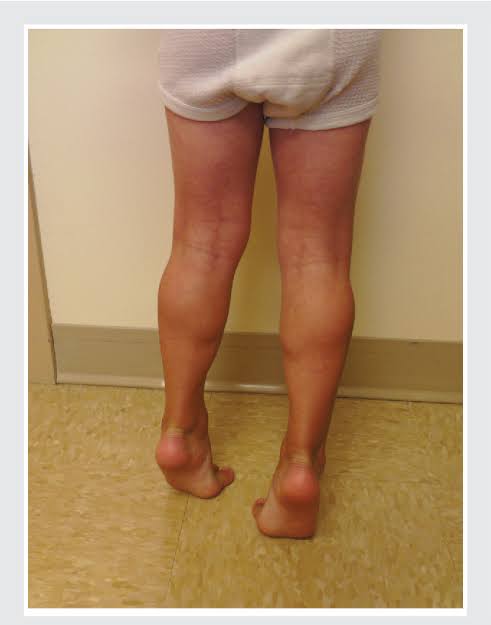Muscular Dystrophy
Muscular Dystrophy refers to a group of genetic, hereditary muscle diseases that cause progressive muscle weakness. Muscular Dystrophy is characterized by progressive skeletal muscle weakness, defects in muscle proteins, and the death of muscle cells and tissue.
-Types of Muscular dystrophy
Becker`s muscular dystrophy:
Becker muscular dystrophy (BMD) is a less severe variant of Duchenne muscular dystrophy and is caused by the production of a truncated, but partially functional form of dystrophin. Survival is usually into middle age.
Congenital muscular dystrophy:
Age at onset: birth; symptoms include general muscle weakness and possible joint deformities; disease progresses slowly; shortened life span. Congenital muscular dystrophy includes several disorders with a range of symptoms. Muscle degeneration may be mild or severe. Problems may be restricted to skeletal muscle, or muscle degeneration may be pair with effects on the brain and other organ systems. Some forms of congenital muscular dystrophy show severe brain malformations, such as lissencephaly and hydrocephalus.
Duchenne muscular dystrophy (DMD)
Duchenne muscular dystrophy (DMD) is the most common childhood form of muscular dystrophy. DMD usually becomes clinically evident when a child begins walking. Patients typically require a wheelchair by age 10 to 12 and die in their late teens or early 20s. In the early 1990s, researchers identified the gene for the protein dystrophin which, when absent, causes DMD. The dystrophin gene is the largest known gene in humans. Since the gene is on the X-chromosome, this disorder affects primarily males. Females who are carriers have milder symptoms. EIGHT STAGES OF DUCHENNE
- 1.Ambulates with mild waddling gait and lordosis. Climbs stairs and curbs without assistance.
- 2.Ambulates with moderate waddling gait and lordosis. Needs support to climb stairs and curbs.
- 3.Ambulates with moderately severe waddling gait and lordosis. Cannot climb stairs or curbs.
- 4.Ambulates with severe waddling gait and lordosis. Unable to rise from a standard height chair.
- 5.Wheelchair independence. Sits erect and can roll chair and perform all activities of daily living (ADL) and wheelchair activities without assistance.
- 6.Wheelchair with dependence. Needs assistance when performing ADL and wheelchair activities.
- Wheelchair with dependence. Sits erect only with support. Able to do minimal ADL.
- Bed patient. Needs maximum assistance for ADL.
Distal muscular dystrophy:
Distal muscular dystrophies` age at onset: 40 to 60 years; symptoms include weakness and wasting of muscles of the hands, forearms, and lower legs; progress is slow and not life-threatening.
Emery-Dreifuss muscular dystrophy
Age at onset, childhood to early teens. Symptoms include weakness and wasting of shoulder, upper arm, and shin muscles; joint deformities are common; progress is slow; sudden death may occur from cardiac problems.
Facioscapulohumeral muscular dystrophy:
Facioscapulohumeral muscular dystrophy (FSHD) initially affects muscles of the face, shoulders, and upper arms with progressive weakness. Symptoms usually develop in the teenage years. Some affected individuals become severely disabled. The pattern of inheritance is autosomal dominant, but the underlying genetic defect is poorly understood.
Limb-girdle muscular dystrophy:
Limb-girdle muscular dystrophy`s is also called LGMD. LGMD`s all show a similar distribution of muscle weakness, affecting both upper arms and legs. Many forms of LGMD have been identified, showing different patterns of inheritance. In an autosomal recessive pattern of inheritance, an individual receives two copies of the defective gene, one from each parent. The recessive LGMDs are more frequent than the dominant forms, and usually have childhood or teenage onset. The dominant LGMDs usually show adult onset. Some of the recessive forms have been associated with defects in proteins that make up the dystrophin-glycoprotein complex.
Myotonic muscular dystrophy:-
Myotonic MD`s age at onset: 20 to 40 years Myotonic muscular dystrophy is the most common adult form of muscular dystrophy. It is marked by myotonia as well as muscle wasting and weakness. Myotonic dystrophy varies in severity and manifestations and affects many body systems in addition to skeletal muscles, including the heart, endocrine organs, eyes, and gastrointestinal tract. While the exact mechanism of action is not known, this molecular change may interfere with the production of important muscle proteins.
Role of Homoeopathic Medicine:-
Homoeopathic remedy has proven that there is a way to lead a healthy and normal productive life for muscular dystrophy. Good diet and homeopathic remedy found to be very effective and successful in muscular dystrophy patients.
It is found that, with the start of medicine there is gradual improvement in the patient’s condition with marked improvement in muscle strength, improved sleeping and eating patterns and weight gain within 1-2 months. Early initiation of treatment in the course of this disease can help a lot in reducing future disability and prolonging survival. One can notice symptomatic improvement within 3-4 months of treatment. Duration of treatment varies with the severity of disease. We have more than 28,000 of muscular dystrophy patients from all over the world.
Dr. Bhardwaj presents a modern and scientific face of homeopathy. His 32 years of practice supported by clinical experience makes it unique in the homeopathic worked. He not only presents the new face of modern homeopathy. His global clinic "Homoeopathic World" in Noida is visited by patients from all over the world.
His team and other support staff not only offer the best of homeopathic treatment but rather set international standards in Medical Practice.
Dr Bhardwaj has a distinction of having treated eminent patients from various faculties such as scientists, medical doctors, researchers, ministers, film celebrities. At the same time, he is easily accessible to all patients.
He had been interviewed on several occasions over the television in Delhi NCR, he also have a live telecast in various TV programme like Pragya TV, Zee Jagaran and Azad news channel. He has introduced new concepts in the field of homeopathy useful to the medical professionals.
In 2001 and 2009, Dr. Bhardwaj was conferred upon "Best Homeopath Of The Year Award"
In 2014, 2015, 2016 and 2017 he has been awarded with "The Best Physician Treating MUSCULAR DYSTROPHY In India

